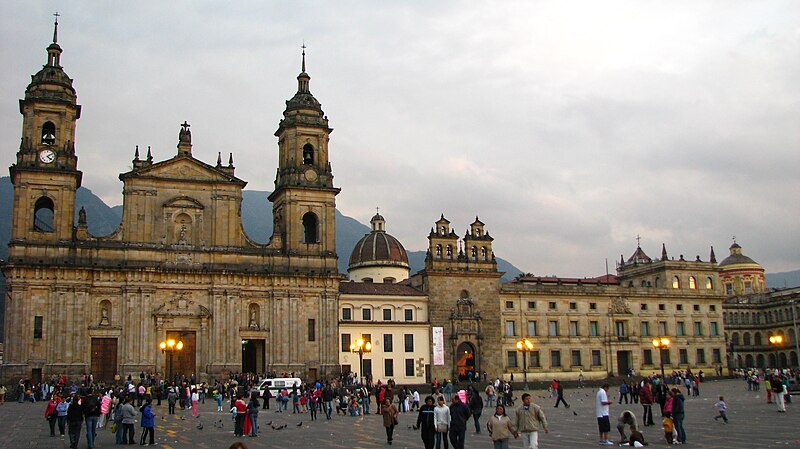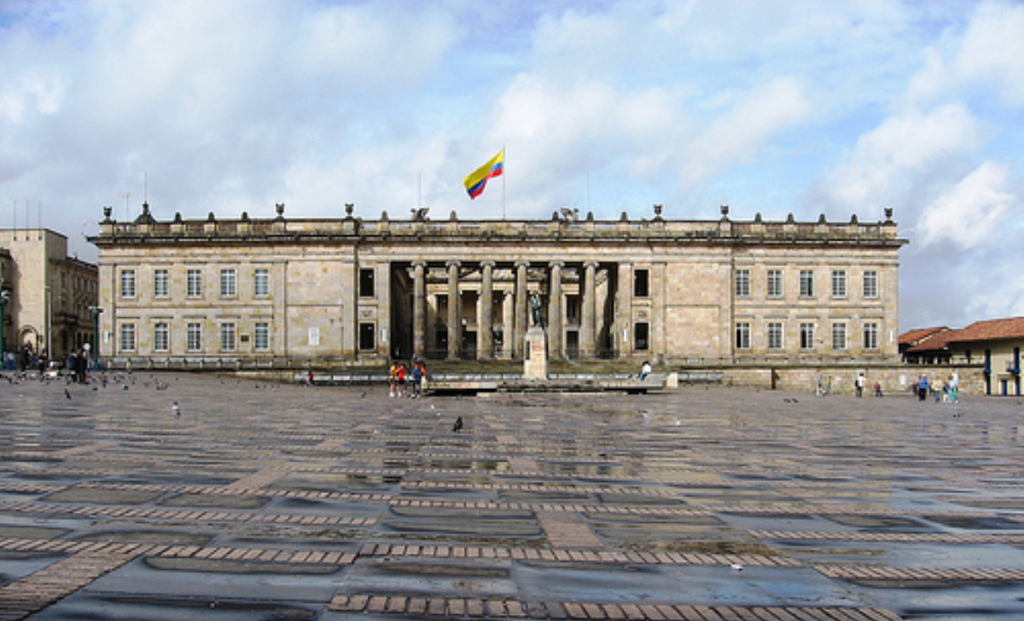
BolIvar Square, located in the heart of Bogota, is an emblematic space that has witnessed significant events throughout its history. From colonial times to the present day, it has been the epicenter of the country’s political, social, and cultural life. Covering an area of approximately 14,000 square meters, the square is an important architectural landmark and a symbol of Colombia’s history.
Colonial Era
The history of Bolivar Square dates back to the 16th century when the Spanish founded the city of Santafe de Bogota in 1538. In its early days, the square was known as the “Plaza Mayor,” and its design was influenced by the Spanish urban tradition of having a central point for civic and commercial activities. The main governmental and religious buildings of the time were erected around it.
Independence and Name Change
During Colombia’s independence process, the square became a meeting place for revolutionary leaders. It witnessed patriotic pronouncements and speeches that fueled the struggle for freedom. In honor of the independence hero Simón Bolivar, the Plaza Mayor was renamed Bolivar Square in 1846.
Notable Historical Events
The square has been the backdrop for various historical events. In 1810, the first government junta that marked the beginning of Colombia’s independence process was held here. There are also moments of somber remembrance, such as the executions of the martyrs of independence in 1816. In 1819, Simon Bolivar was appointed President of Gran Colombia in this very place. Gran Colombia was the academic term used for the Colombia of that time, which included the present-day countries of Colombia, Panama, Venezuela, and Ecuador. Additionally, at different moments in history, the square has been the site of significant events, including commemorative acts, protests, and official ceremonies.
Iconic Buildings
Surrounding Bolivar Square are some of Bogota’s most iconic buildings. One of the most notable is the Primatial Cathedral of Colombia, a majestic neoclassical construction that began in 1807 and was completed in 1823. The National Capitol, the seat of the Congress of Colombia, also stands out with its impressive neoclassical architecture and golden dome, inaugurated in 1926.

Transformations Over Time
Throughout the centuries, Bolivar Square has undergone several transformations and renovations to adapt to the city’s needs. In the 19th century, fountains were installed and trees were planted to beautify the area. In the 20th century, the square underwent significant remodeling and design changes to improve functionality and highlight its historical value.
The Present
Today, Bolivar Square remains the political heart of Colombia. It is a gathering point for political and cultural demonstrations, as well as a place of leisure for citizens and tourists. The space continues to stand as an icon of Colombian history and national identity.

Bolivar Square in Bogota is more than just an urban space; it is a silent witness to Colombia’s history. From its colonial beginnings to the present day, it has been a place of gathering, protest, and celebration for citizens. With its impressive buildings and rich history, Bolivar Square will continue to be a symbol of Colombia’s political and social life in the future.

See all the latest news from Colombia and the world at ColombiaOne.com. Contact our newsroom to report an update or send your story, photos and videos. Follow Colombia One on Google News, Facebook, Instagram, and subscribe here to our newsletter.

